Thank you for joining us for part two of our post-pandemic office blog series. In part one, we looked at the evolution of office trends to see how current events and technology have shaped the workplace and employee preferences over time. In part two, we allow statistics to tell the story of remote work. We read through hundreds of articles and studies to understand the impacts of remote work on individuals and organizations. In this article, we highlight seven takeaways for office users and investors to consider:
- Leaders and Employees: Statistics show that many leaders have a better work-from-home experience than their employees.
- Women: Working from home during the pandemic was especially hard on working moms.
- Gen Z: Job satisfaction and workplace preferences vary for the youngest generation of professional workers, who began entering the workforce during lockdowns.
- Work-Life Balance: Blurred work-life boundaries may lead to higher levels of stress and burnout.
- Great Resignation: In 2021, the percentage of engaged employees declined for the first time in over a decade.
- Workplace Preferences: Employees prefer an office environment when they are working in collaboration with others.
- The Office: The physical office offers significant benefits to both companies and employees.
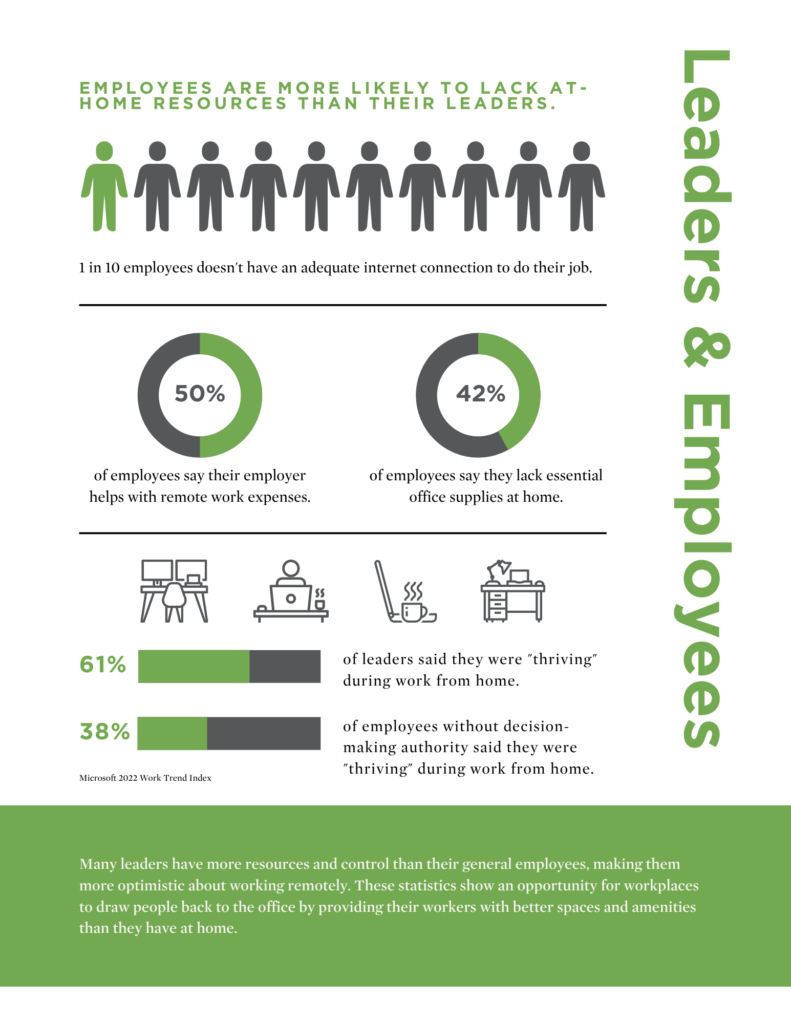
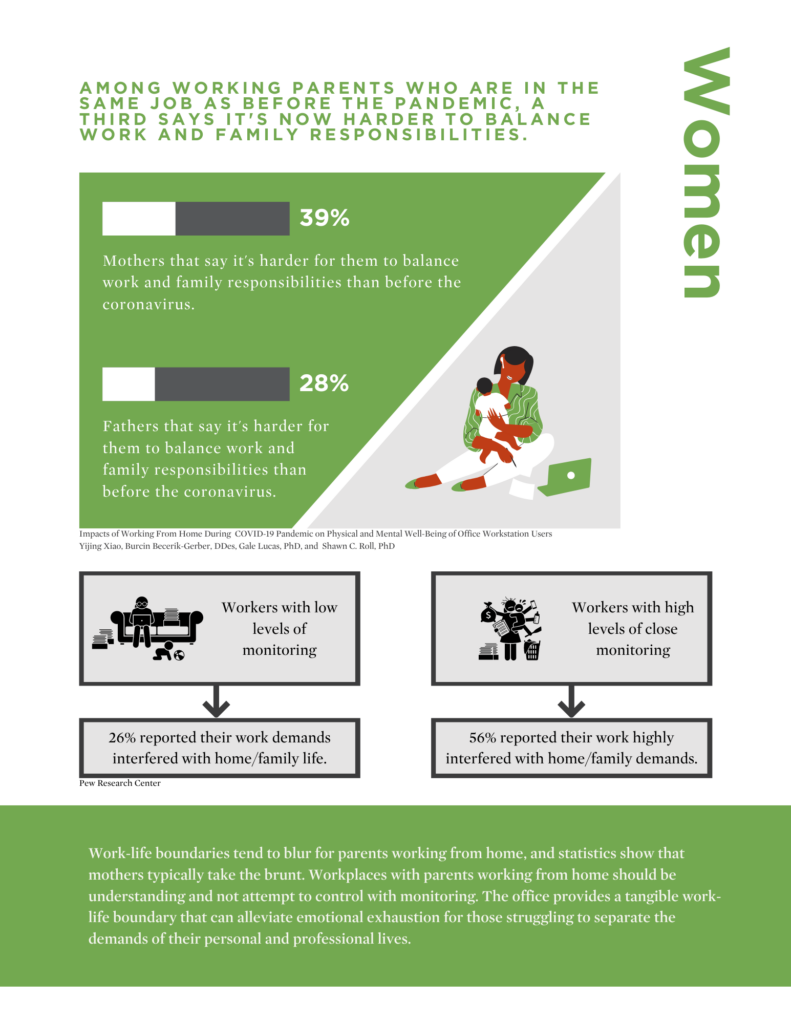
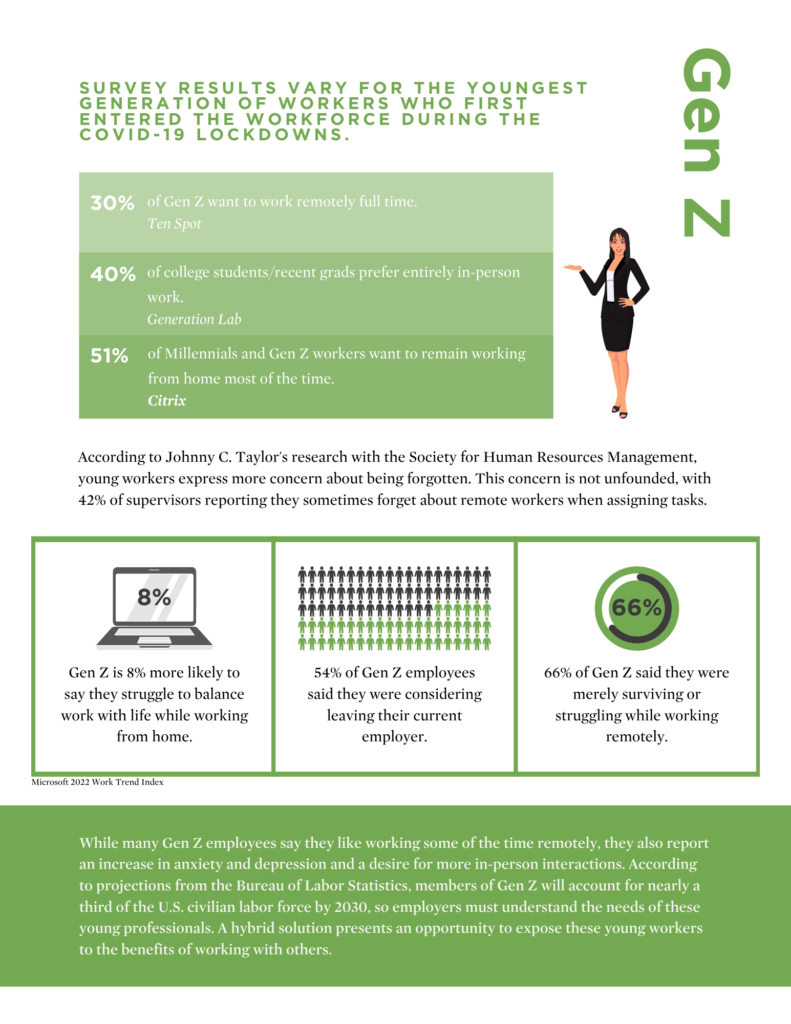
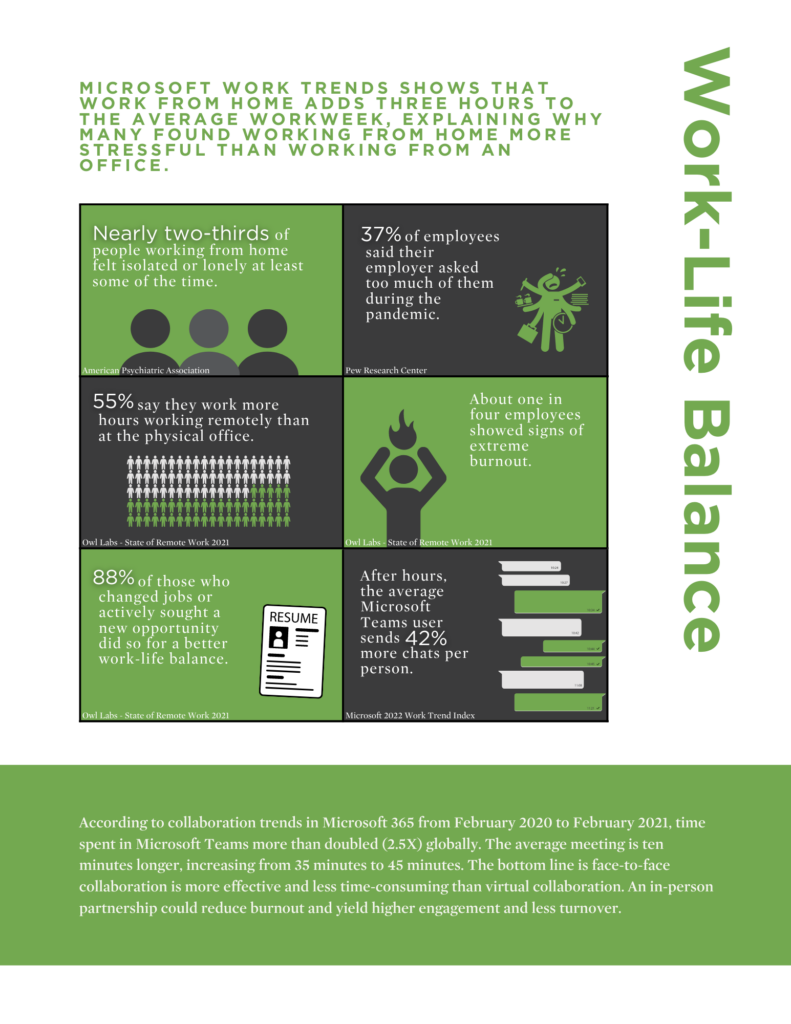
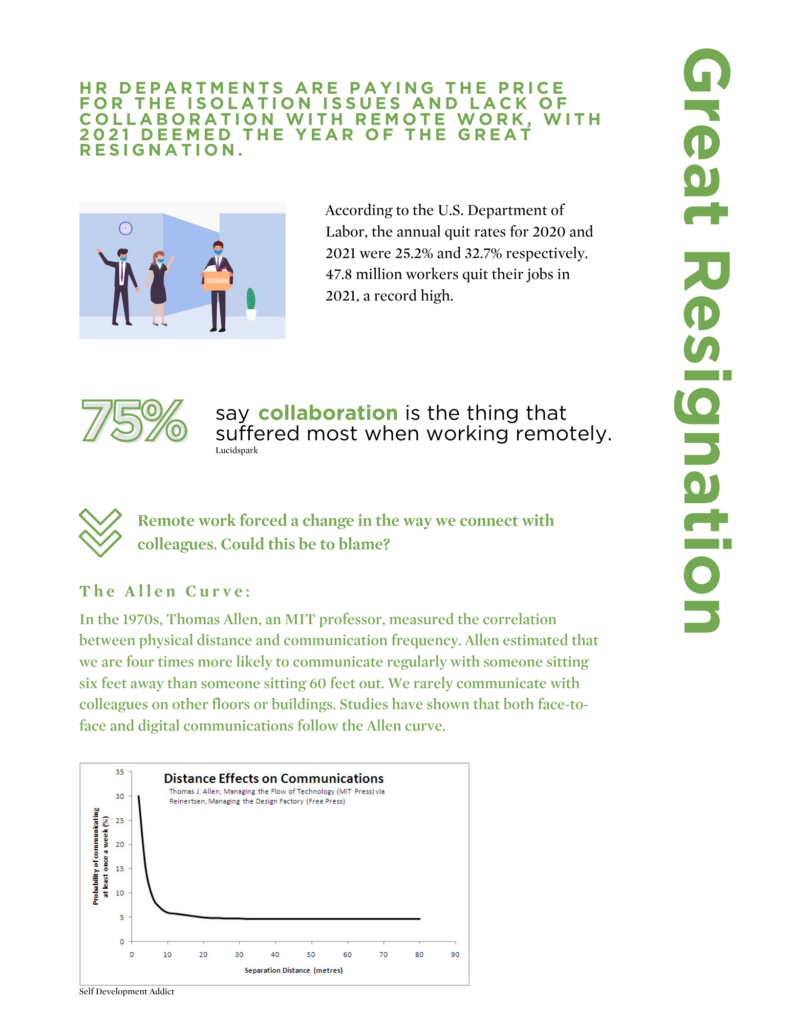
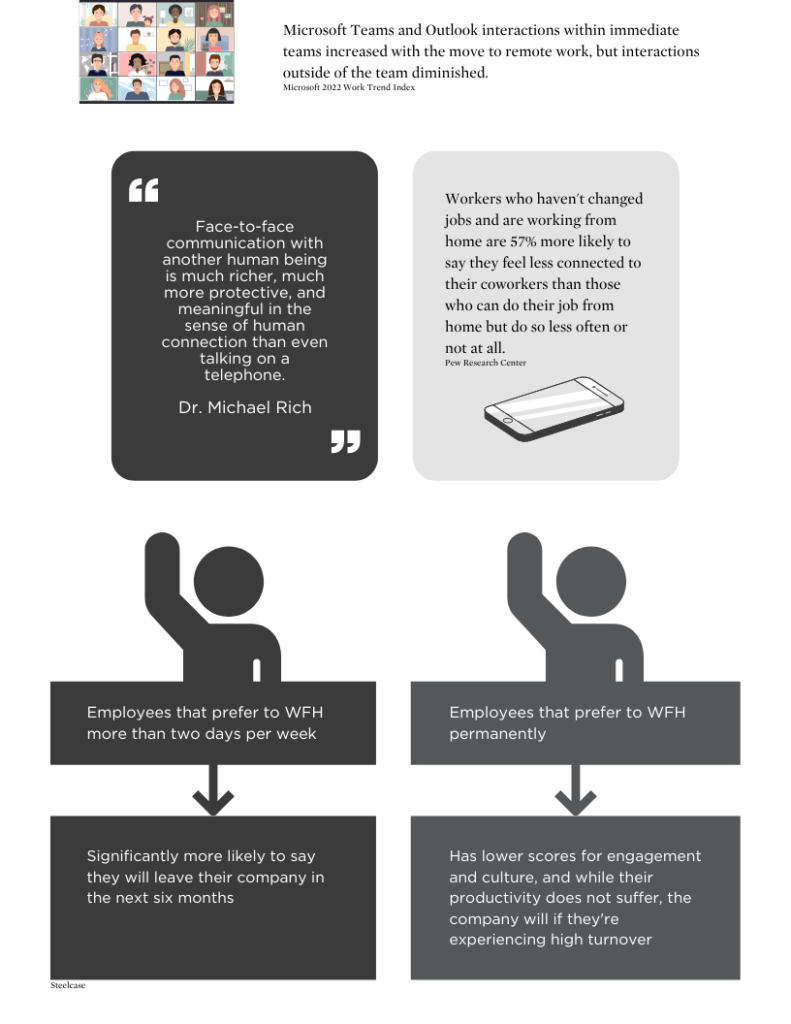
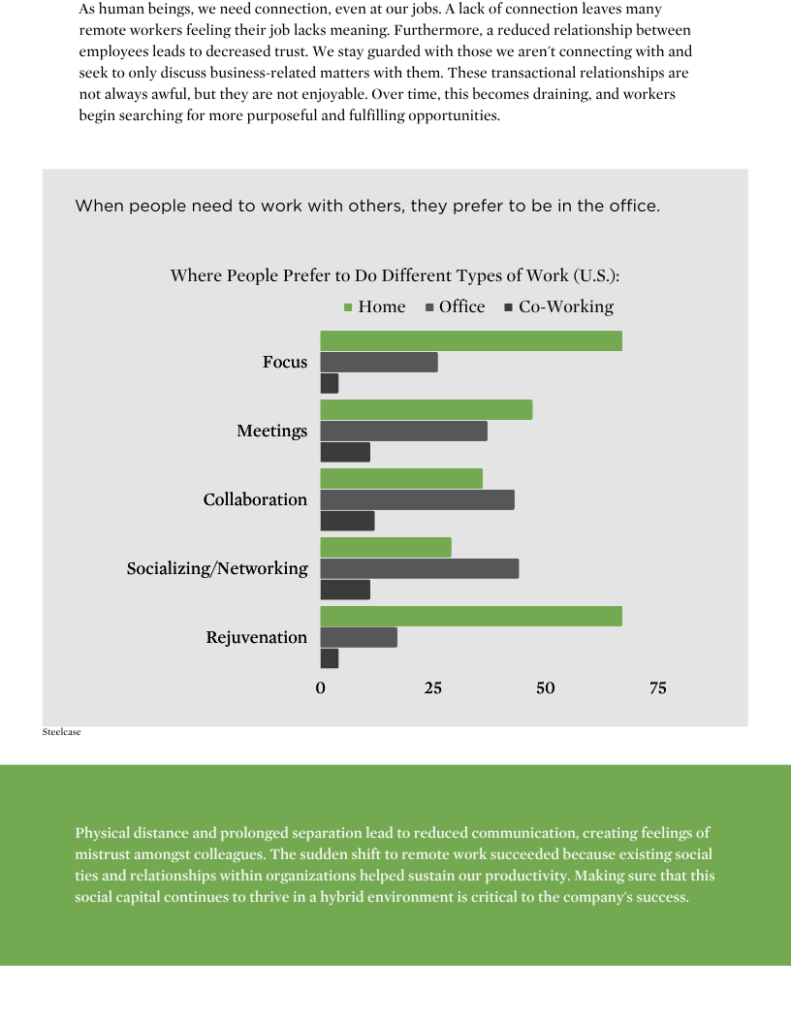
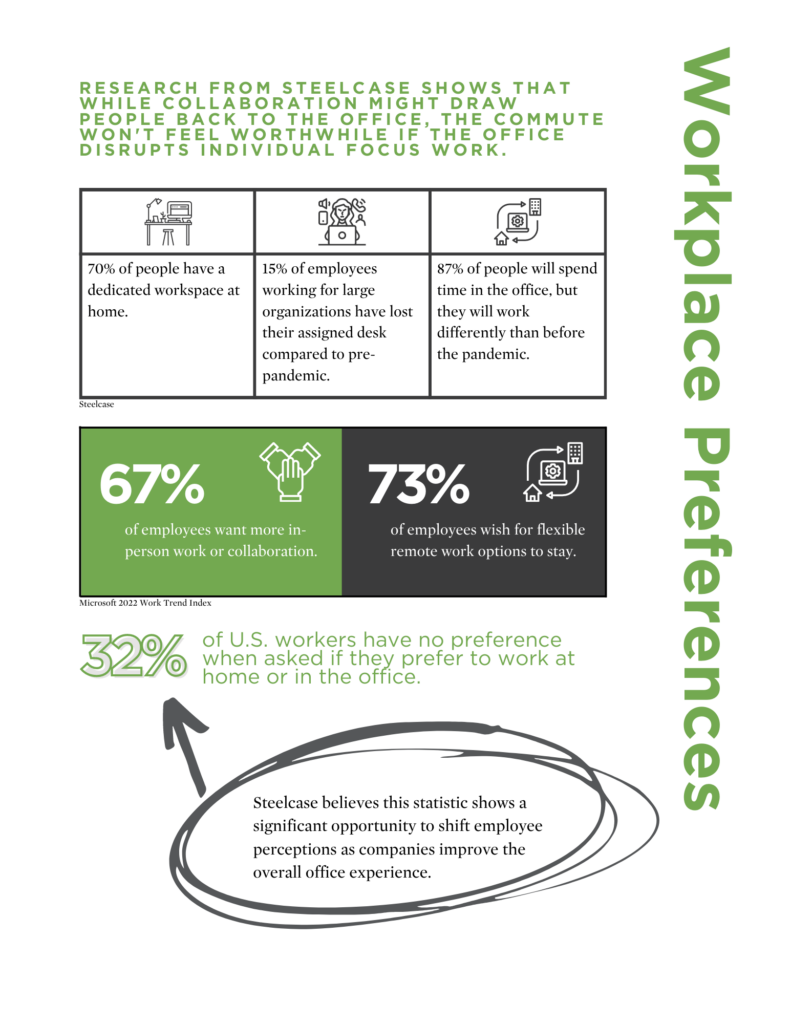
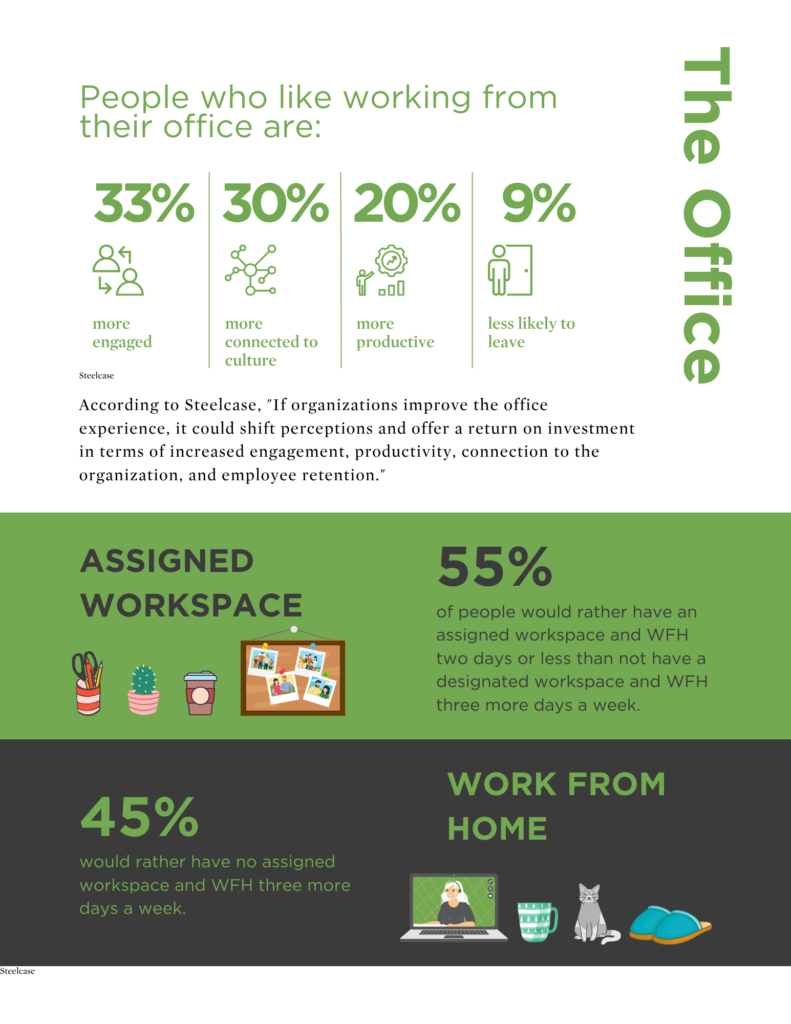
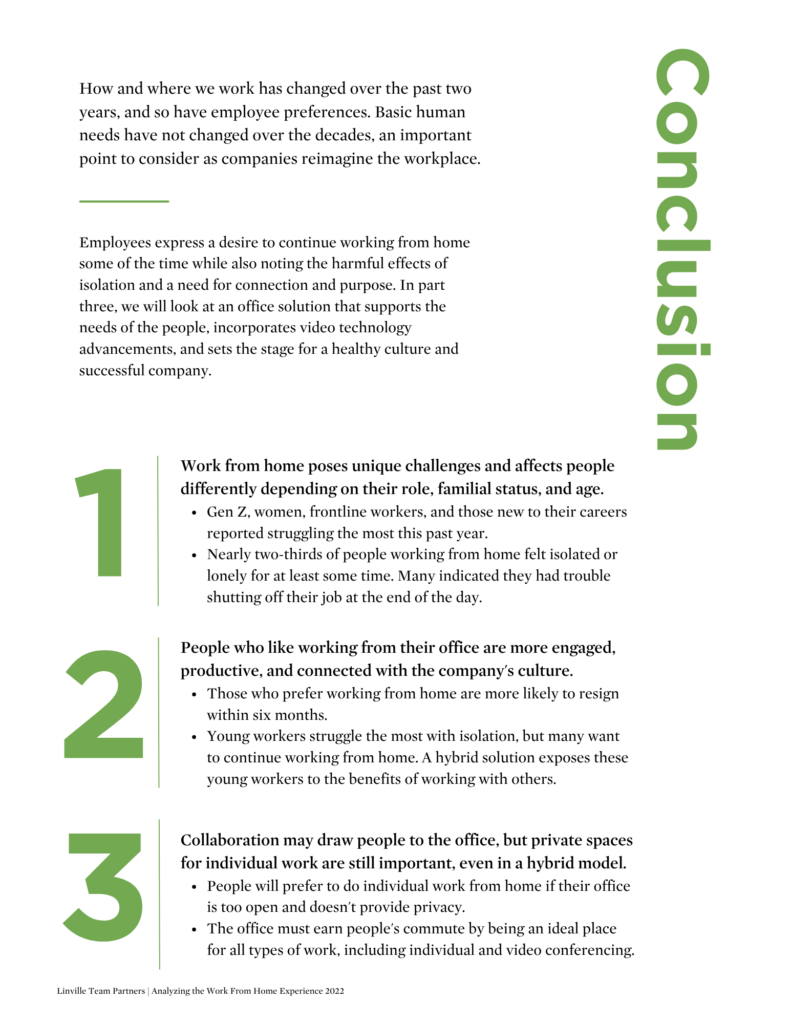
References
- Microsoft. “Great Expectations: Making Hybrid Work Work.” 2022 Work Trend Index: Annual Report. 16 Mar. 2022, https://ms-worklab.azureedge.net/files/reports/2022/pdf/2022_Work_Trend_Index_Annual_Report.pdf. Accessed 21 Feb. 2022.
- Xiao, Y., Becerik-Gerber, B., Lucas, G., & Roll, S. C. (2021). “Impacts of Working From Home During COVID-19 Pandemic on Physical and Mental Well-Being of Office Workstation Users.” Journal of occupational and environmental medicine, 63(3), 181–190. Mar. 2021, https://doi.org/10.1097/JOM.0000000000002097. Accessed 04 May 2022.
- American Psychiatric Association. “As Americans Begin to Return to the Office, Views on Workplace Mental Health Are Mixed.” APA Foundation’s Center for Workplace Mental Health. 20 May 2021, https://psychiatry.org/news-room/news-releases/as-americans-begin-to-return-to-the-office-views-o. Accessed 15 Feb. 2022.
- Owl Labs. “State of Remote Work 2021: 5th Annual Edition.” Annual State of Remote Work. 07 Jan. 2022, https://owllabs.com/state-of-remote-work/2021. Accessed 04 Feb. 2022.
- Jennifer Jackson. “What’s really suffering while working remotely? Collaboration and creativity.” Lucidspark. Sept. 2020, https://lucidspark.com/blog/remote-work-hurts-collaboration-and-creativity. Accessed 04 May 2022.
- Steelcase. “The New Era of Hybrid Work: It’s Time to Give People What They Want.” Steelcase Global Report. Feb. 2022, https://www.steelcase.com/hybrid-work-global-report/. Accessed 02 Feb. 2022.
- Why Company Culture Matters in Real Estate (and Every Industry)
- Why Leasing Strategy Is More Than Just Signing the Deal
- Cap Rates, Co-Tenancy, and Contingencies: A Real Estate Glossary for Operators
- Understanding Rule 506(c): What It Means for Real Estate Investors
- How to Evaluate a Real Estate Investment Opportunity Like a Pro